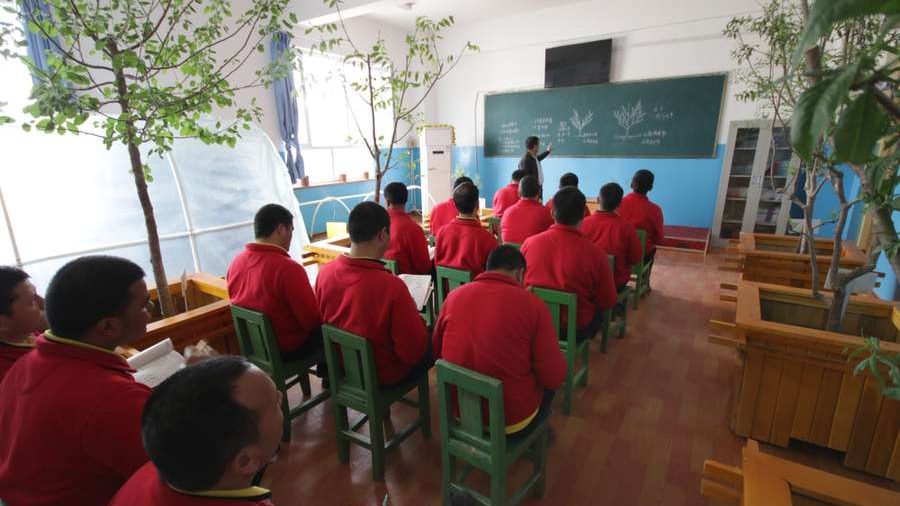Leaked government documents from China have shed light on the country’s extensive network of internment camps for religious minorities, and exposed the use of an algorithm to determine who will be arrested and detained.
The documents were acquired by the International Consortium of Investigative Journalists (ICIJ) and were released on Sunday, Nov. 24 to a variety of media outlets. The ICIJ translated the document into English and published both the translated and original copies on its website.
China denies the documents are authentic and says they are fabricated and “fake news.” According to the ICIJ, multiple linguists and other experts on China have determined that they are authentic and are written in a similar manner to other classified documents from China.
One of the documents appears to be part of a manual or handbook for the operation of the internment camps, which are referred to as “vocational skills education and training centers.” The handbook is dated to 2017, when the internment camps first began operating, and is marked as “confidential.”
The manual is titled “Opinions on the Work of Further Strengthening and Standardizing Vocational Skills Education and Training Centers,” and was apparently issued by the Xinjiang Autonomous Region’s Political and Legal Affairs Commission.
These internment camps are believed to house an estimated hundreds of thousands of Uighur Muslims, as well as other religious and ethnic minorities from the western province of Xinjiang.
The manual includes details on how prison camp employees should work to prevent escapes of prisoners, prevent information about the camps themselves from being leaked, and how to indoctrinate prisoners. Additional guidelines in the document detail how to stop disease outbreaks, fires, and when those imprisoned in the camp are to be allowed to use the bathroom or see their relatives.
Per the document, those in the camps are only allowed one phone call to relatives per week and one video chat per month. Those privileges can be revoked at any time.
China initially denied the existence of the camps. In October 2018, following numerous satellite images showing the construction of the camps and eyewitness accounts from former detainees, Xinjiang’s governor Shohrat Zakir admitted to their existence. Zakir categorized the camps as part of efforts to “de-radicalize” the Uighur population by providing vocational training.
The manual explains the three-prong “education” system in the camps. Those in the camps are to be instructed in Mandarin, undergo “labor skills training,” and finally, ideological education.
In the section labeled “Ideological education,” camp personnel is instructed to “Effectively resolve ideological contradictions, and guide students from bad emotions.” Prisoners are repeatedly referred to as “students” throughout the manual.
“Actively organize and concentrate on activities such as presentations, form a healthy and inspirational atmosphere, promote repentance and confession of the students for them to understand deeply the illegal, criminal, and dangerous nature of their past behavior,” says the manual.
For prisoners who “harbor vague understandings, negative attitudes, or feelings of resistance,” the manual instructs workers to “carry out education transformation” that will “ensure that results are achieved.”
Prisoners in the camp are subjected to a points system, the handbook explains. The levels, or “management areas” are described as “strong (very strict),” “strict” and “general.”
“According to their performance and point situation, after evaluation and review, the student’s management and education classification can be dynamically adjusted,” says the manual. The “students” will each have a meticulously-kept file that contains information about their “performance, rewards and punishments, and grade improvements, etc.”
In addition to the manual, four “bulletins” were also part of the document leak. These bulletins, which were also translated into Englisha and posted online by the ICIJ, outline the country’s “Integrated Joint Operations Platform (IJOP).”
The IJOP is how the Chinese government collects personal data from people, which it then runs through an algorithm to determine if a person is deemed suspicious or not. Components of the IJOP include a spyware app on cellular phones, and the systematic and pervasive use of facial recognition cameras throughout the province.
“From June 19th to 25th, the ‘integrated platform’ of the four states of southern Xinjiang notified the country and city (governments) of 24,412 suspicious persons,” says the document titled “‘Integrated Joint Operation Platform’ Daily Essentials Bulletin No. 14.”
Of the 24,412 “suspicious persons,” 15,683 of these people were “sent to education and training.” An additional 2,096 were “put under preventative surveillance.”

